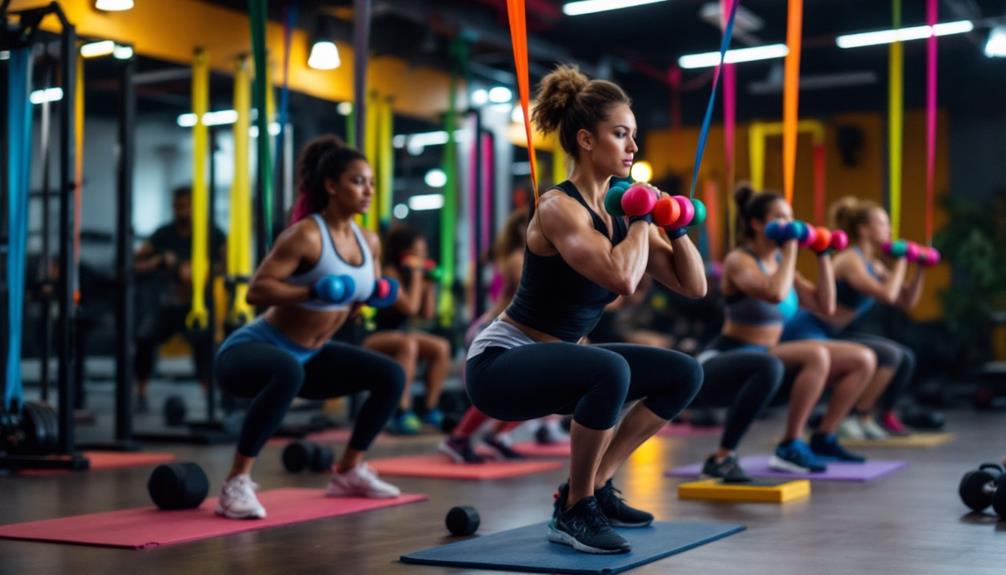To enhance your lower body strength, try these five essential resistance exercises. First, squats target your quadriceps, hamstrings, and glutes—keep your chest up and lower until your thighs are parallel to the ground. Next, lunges improve balance and strength; remember to tighten your core. Deadlifts engage your hamstrings and lower back—push through your heels for maximum effect. The leg press allows you to control your weight effectively, so focus on technique. Ultimately, glute bridges strengthen your glutes and hamstrings; press your heels into the ground for added challenge. Want to explore more exercise tips?
Core Insight
- Squats: A fundamental exercise that strengthens quadriceps, hamstrings, glutes, and core; ensure proper form by keeping the chest up and back straight.
- Lunges: Enhance lower body strength and balance; consider using resistance tubes or adding weights for increased intensity and varied lunge forms.
- Deadlifts: Target the hamstrings, glutes, and lower back; maintain core engagement and push through heels for effective performance.
- Leg Press: Focus on controlled movements with feet shoulder-width apart to effectively strengthen lower body muscles; ensure to breathe correctly throughout.
- Glute Bridges: Activate the glutes and hamstrings; hold the top position for added intensity, and incorporate weights for a greater challenge.
Squats
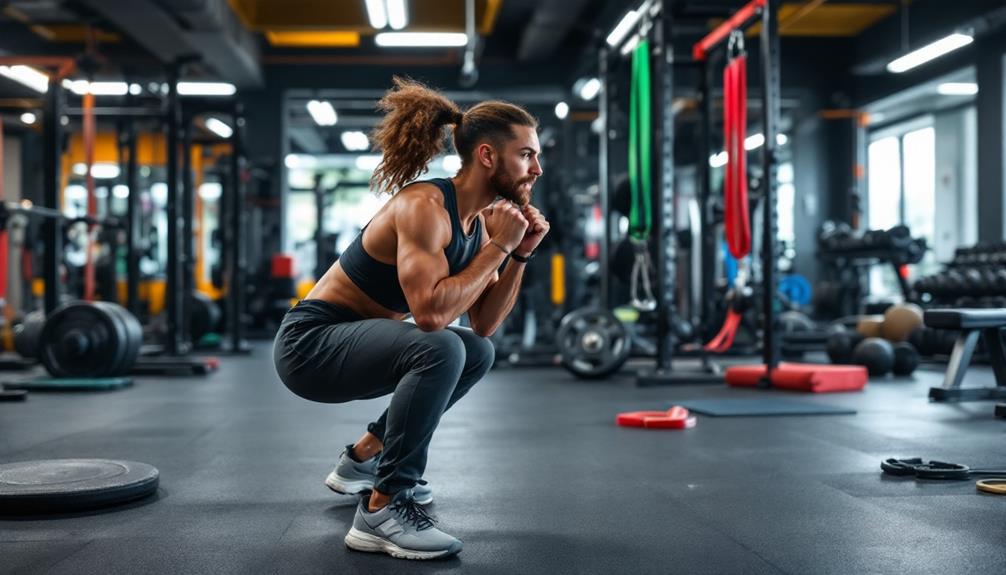
Squats are a key exercise for strengthening your lower body. They work several muscles, including your quadriceps, hamstrings, glutes, and even your core. To do a basic squat, stand with your feet shoulder-width apart. Keep your chest up and your back straight. Bend your knees and push your hips back as if you are sitting in a chair. Lower your body until your thighs are parallel to the ground. Then, push through your heels to stand back up.
Squats are great for muscle recovery and growth, just like grass-fed whey protein. They also help with weight management and overall health when paired with good nutrition. Aim to do three sets of 10 to 15 reps. Adding squats to your routine not only builds strength but also improves your balance and stability, making them an important part of your fitness journey.
Lunges
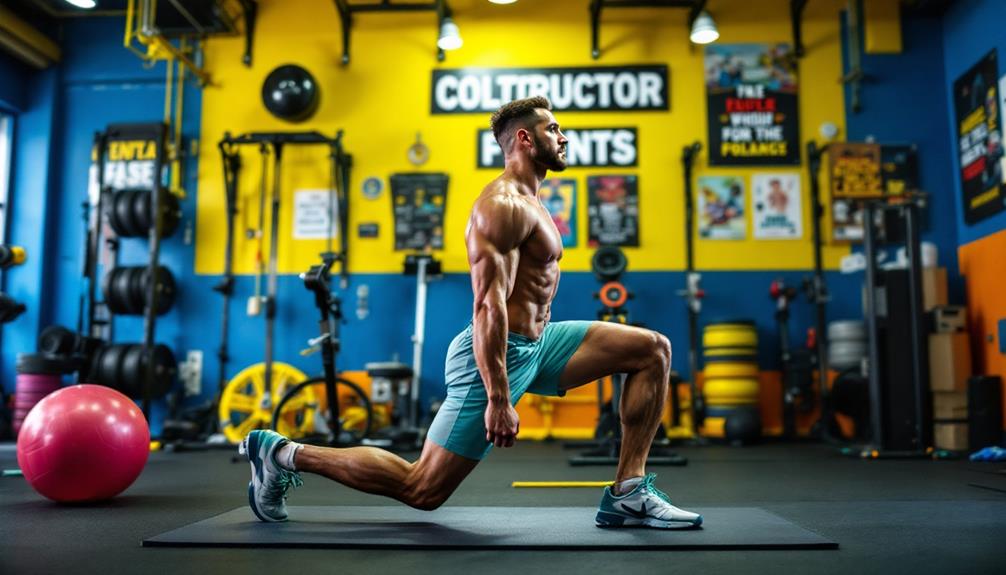
- Keep Good Form: Stand tall and step forward with one leg. Lower your hips until both knees are bent at about 90 degrees. If you want to make it harder, you can use stackable resistance tubes to add more challenge as you get better.
- Use Your Core: Tighten your stomach muscles to help you stay balanced.
- Add Weights: Hold a dumbbell in each hand to make the exercise tougher.
- Mix It Up: Try different types of lunges, like reverse lunges or side lunges, to work different muscles.
Adding lunges to your workout will help build strength in your legs and improve your balance.
Deadlifts
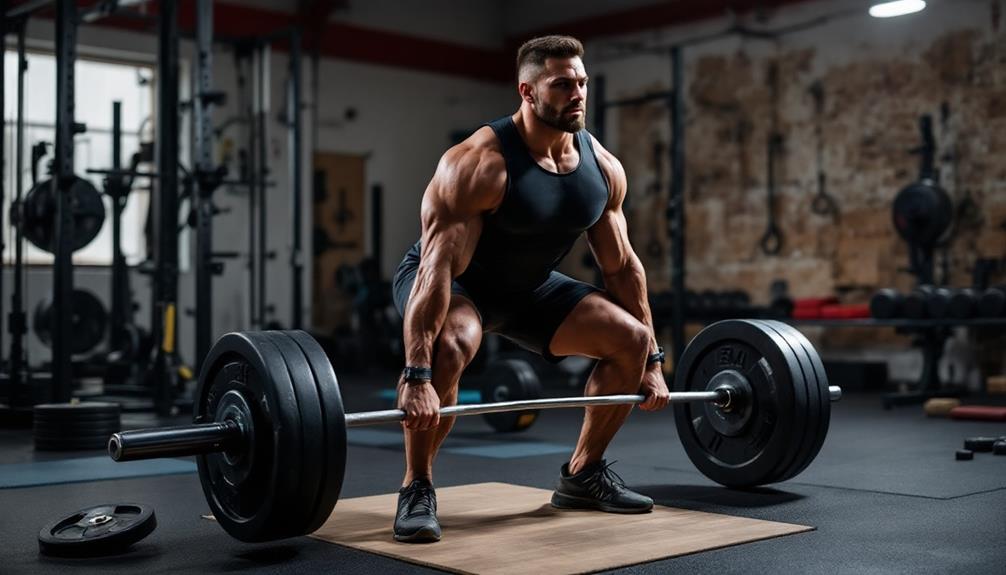
Deadlifts are a great exercise for building strength in your lower body and back. They work several muscle groups, including your hamstrings, glutes, and lower back, making them an important part of any workout routine.
To do a deadlift, stand with your feet shoulder-width apart, grip the barbell, and keep your back straight. As you lift, engage your core and push through your heels.
Here's a quick look at some deadlift variations:
| Variation | Target Muscles |
|---|---|
| Conventional | Hamstrings, Glutes |
| Sumo | Inner Thighs, Glutes |
| Romanian | Hamstrings, Back |
| Single-Leg | Balance, Stability |
Add deadlifts to your workouts, and you will see big improvements in your overall strength.
Leg Press
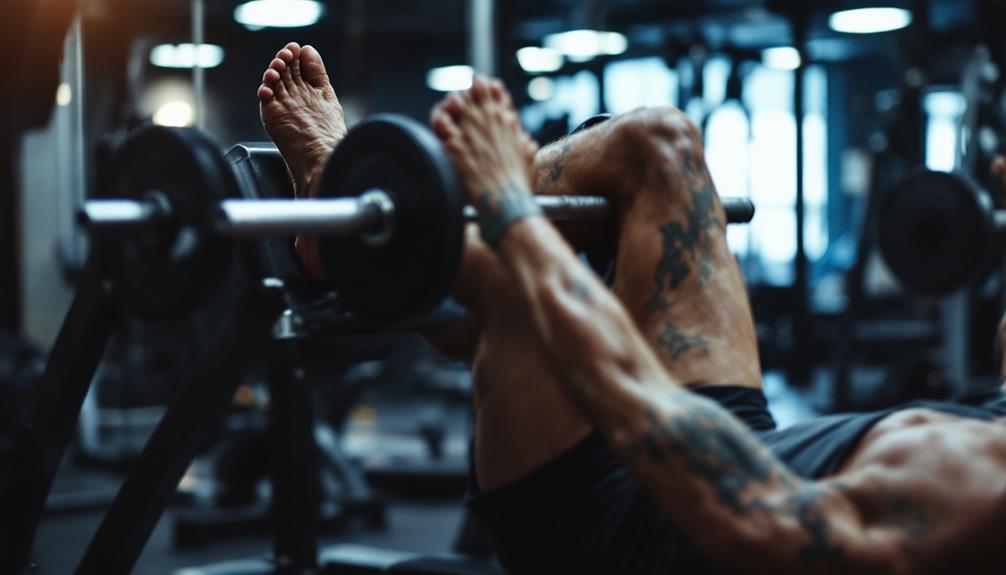
- Set the Weight: Start with a weight that feels comfortable to help you keep good form.
- Position Yourself: Sit in the machine and place your feet shoulder-width apart on the platform.
- Control the Movement: Lower the platform until your knees are bent at a 90-degree angle. Then, push it back to the starting position. After your workout, consider using a foam roller to help your muscles recover and reduce soreness.
- Breathe Properly: Breathe in as you lower the weight and breathe out as you push it back up.
Adding the leg press to your workout can help you build strength in your lower body.
Glute Bridges
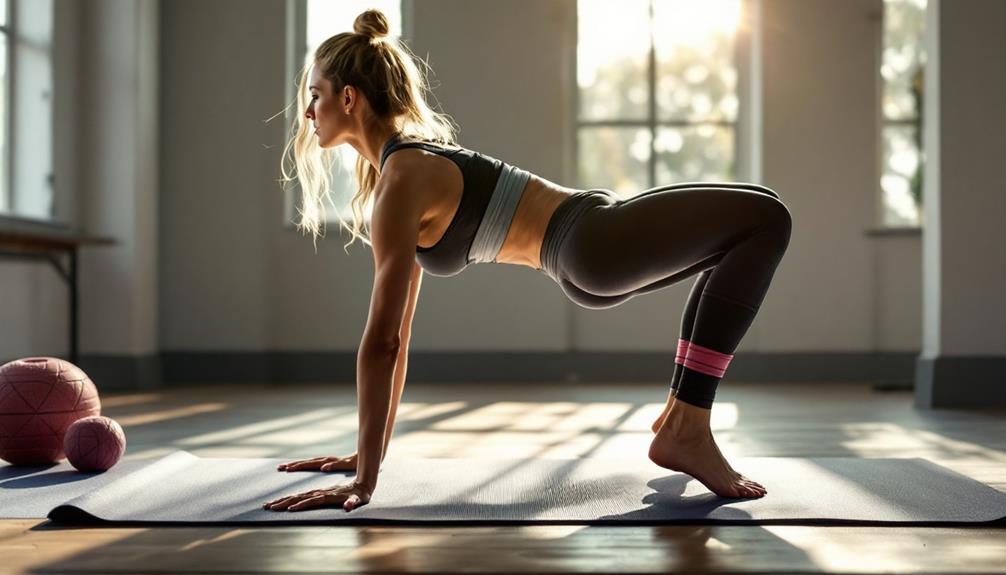
Glute bridges are a great exercise for working your glutes and hamstrings. To do this exercise, lie on your back with your knees bent and feet flat on the floor, about hip-width apart. Press your heels into the ground and lift your hips up toward the ceiling. Keep your shoulders relaxed and your core tight. At the top, make sure your body forms a straight line from your shoulders to your knees. Hold this position for a moment, then lower your hips back to the ground. Repeat this for 10 to 15 repetitions.
If you want to make it harder, you can add weight by placing a barbell or dumbbell across your hips. After your workout, consider using a foam roller to help with any soreness in your glutes and hamstrings. This exercise helps build strength and stability in your lower body.
Frequently Asked Questions
How Often Should I Train My Lower Body Each Week?
Think of your muscles like a garden; they thrive with care. You should train your lower body two to three times a week, allowing rest days to help them grow strong and resilient. Balance is key!
What Equipment Do I Need for Lower Body Resistance Training?
For lower body resistance training, you'll need equipment like dumbbells, resistance bands, or a barbell. A sturdy bench or step can also be helpful. Don't forget a mat for comfort during floor exercises!
Can I Do These Exercises at Home?
Absolutely, you can transform your living room into a gym oasis. With just a few simple tools or even bodyweight, you're ready to sculpt your lower body. Embrace the journey; your home's potential awaits!
How Do I Prevent Injury While Exercising?
To prevent injury while exercising, you should warm up properly, use correct form, start with lighter weights, listen to your body, and gradually increase intensity. It's important to rest and recover adequately between workouts, too.
What Are Some Common Mistakes to Avoid During These Exercises?
Avoiding common mistakes during exercises is essential; it's like dodging a tornado in a paper house. Don't rush your form, skip warm-ups, or underestimate rest—these can lead to injury and derail your progress.

